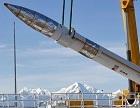Could Trump Close the Door on Canada and BMD?

See The Simons Foundation's page on The Canadian Defence Policy Review for briefing papers by Ernie Regehr, O.C., Senior Fellow in Defence Policy and Arctic Security at The Simons Foundation.
Could Trump Close the Door on Canada and BMD?
For Canadians keen on joining the American strategic-range ballistic missile defence system, the Administration of Barack Obama seemed to present the perfect opportunity. Under a president much-admired by Canadians, opposition to signing on to a huge, expensive, and highly controversial Pentagon program would arguably have been considerably muted. Added to that, North Korea’s apparently inexorable progress towards mating a credible intercontinental ballistic missile with a nuclear warhead might have been expected to spark more intense Canadian interest in protection efforts. But there has never been a groundswell of public support for Canadian involvement in ballistic missile defence, so the issue only got as far as the new Liberal Government asking Canadians, in the context of the Defence Policy Review, whether this might be the time for Canada to pursue a direct role in North American missile defence. And Canadians seem to have responded with continuing ambivalence, an ambivalence likely to turn into outright rejection with Donald Trump’s arrival at the White House. And if that is not enough to close the door on Canada and BMD, last year’s report by the American Union of Concerned Scientists on the still unproven strategic missile defence system should do it.
In 2005 the Government of Paul Martin declined to become a partner in the US strategic ballistic missile defence system (BMD) – the core of that system being 30 interceptors (four in California and 26 in Alaska), with another 14 to be added in Alaska, designed to launch non-explosive warheads (kill vehicles) into space to collide with and destroy attacking nuclear warheads headed for the United States. In 2014 a Committee of the Canadian Senate recommended that Canada become a partner in the system, and in 2015 the Government of Stephen Harper indicated some openness to revisiting the 2005 decision. In part, the interest in re-opening the BMD question for Canada was linked to the recognition that the North Warning System, a string of radars across the American and especially the Canadian Arctic to detect incoming aircraft (notably Soviet nuclear bombers during the Cold War), was coming due for replacement and possible upgrading to include ballistic missile detection and tracking. Also in 2015, a University of Ottawa paper by academics and some former officials and politicians urged Canada to join the BMD operation and to try to persuade the US to shift the system’s command and control to NORAD, the North American Aerospace Defence Agreement. Thus, the public consultation backgrounder for the Defence Policy Review asks whether the 2005 decision should be revisited “given changing technologies and threats,” whether BMD participation would “offer an avenue for greater continental cooperation,” or whether there might be “more effective” ways to “protect the North American continent?”
The Government’s summary of defence review roundtable discussions points to ongoing ambivalence. There is said to be “general agreement that Canada must play a role in mitigating any nuclear threat,” but also differing views on how that might be done. Some Canadians do think BMD should be part of that effort, but others doubt that BMD would offer significant protection and fear that it could trigger “a renewed arms race.” Some think renewal of the North Warning System and engagement in ballistic missile defence would offer significant development opportunities for the Arctic. At the same time, others see BMD as both costly and unproven.
Notwithstanding the Trump Administration’s full-throated enthusiasm for “a state-of-the-art missile defense system” that “protects” America in the face of Iranian and North Korean missile attacks, doubts about BMD continue to abound. And last year’s comprehensive assessment and report by the American Union of Concerned Scientists (UCS) should add to them. The UCS has a long history, rooted in the Massachusetts Institute of Technology, of careful, and critical, science-based analysis of American environmental and nuclear weapons policies and programs, and brings that same evidence-based critique to the American strategic missile defence program in the study, Shielded from Oversight: The Disastrous US Approach to Strategic Missile Defence.
The 1999 National Missile Defense Act committed the United States to "deploy[ing] as soon as is technologically possible an effective National Missile Defense system capable of defending the territory of the United States against limited ballistic missile attack (whether accidental, unauthorized, or deliberate)” (emphasis added). It was a commitment in principle to deploy, but only on condition that it actually be proven to work – a condition, one would have thought, that would be axiomatic for any new military system. Continue reading....
Ernie Regehr, O.C. is Senior Fellow in Defence Policy and Arctic Security at The Simons Foundation, and Research Fellow at the Centre for Peace Advancement, Conrad Grebel University College, University of Waterloo.